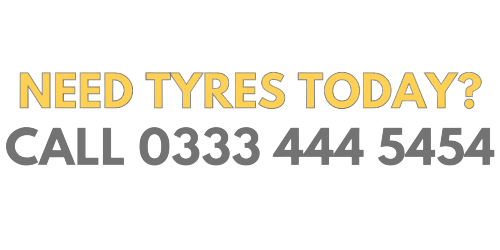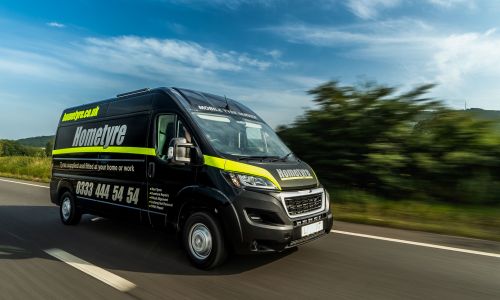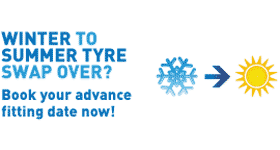Why should you fit new tyres to the rear?
When most people buy new tyres they often fit them to the front as they believe that these are the driving wheels and must have the best tread, are less likely to suffer a blowout and can cope better with the rigors of steering, accelerating and braking. Although these reasons sound logical, they are in fact wrong and could cause serious trouble for the driver especially in wet conditions.

Tyres are designed with grooves to help evacuate water from the tread area, allowing the tyre to grip the road, as tyres wear you can get to a situation where not enough water can escape through the grooves and the tyre will float on the water or as it is correctly known 'Aquaplane' or ' Hydroplane'.
With new tyres fitted to the front and worn tyres at the rear, the likelihood is that the rear will aquaplane first and will cause over-steer. The rear tyres lose traction and the rear of the vehicle begins to slide. Over-steer is very difficult for any normal driver to control and braking can make it worse with the vehicle spinning round and possibly crashing.
If you fit new tyres to the rear and old tyres to the front, the front should aquaplane first, this will cause under-steer. The vehicle will continue in a straight direction, even if you are trying to steer right or left. This is easier to control and by easing off of the accelerator and braking lightly, most drivers will soon get the vehicle back under control.
We at Hometyre will always recommend fitting any new tyres to the rear of your vehicle, should this mean that we have to swap all the tyres around, then we will do this for a small charge, included in this small charge is the re-balancing of the old tyres as they are moved to the front.
Another downside to fitting new tyres to the front, is that you leave the older and more brittle tyres on the rear of the vehicle. 90% of punctures occur in the rear of the vehicle and if you have the older tyres on the rear when the object pierces the tyre it is more likely to burst, resulting in a blowout. However, if you have the newer rubber on the back, it is more likely to absorb the object and close itself around it, potentially preventing a dangerous accident.

We would also recommend replacing both tyres on the same axle at the same time if the tread of the older tyre on the vehicle is considerably lower than the tread of the new tyre. This will result in better handling, greater control and good levels of stability to your vehicle.
Mounting tyres correctly along with balancing reduces vibration which gives a smoother ride and can help save your shock absorbers from any early damage.
A brand new Car tyre comes with 8mm of tread, and even though the legal limit is 1.6mm, it is recommended to change your tyres once they reach 3mm. As your tread depth decreases, the chances of aquaplaning increase, as do your braking distances. This is even more noticeable on cars with larger wheels and wider tyres.
Wear bars are placed at points all around a tyre in the grooves, these are set at approx. 2mm. Should you find that your tread is level with the wear bar, then we would recommend changing your tyres as soon as possible.

wear bars arrowed
If you need new tyres fitted at your home or work address, give us a call today on 0333 444 5454!








HometyreGroup
Join the conversation
on Twitter
Follow us